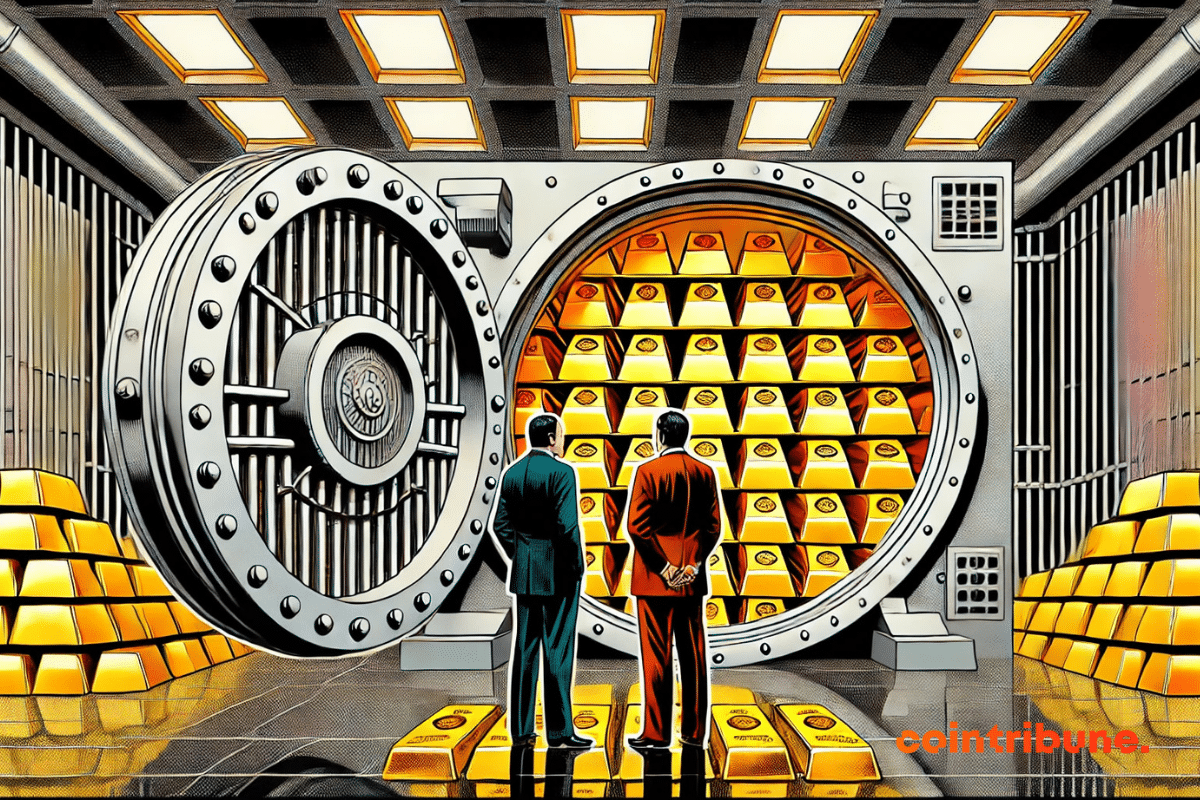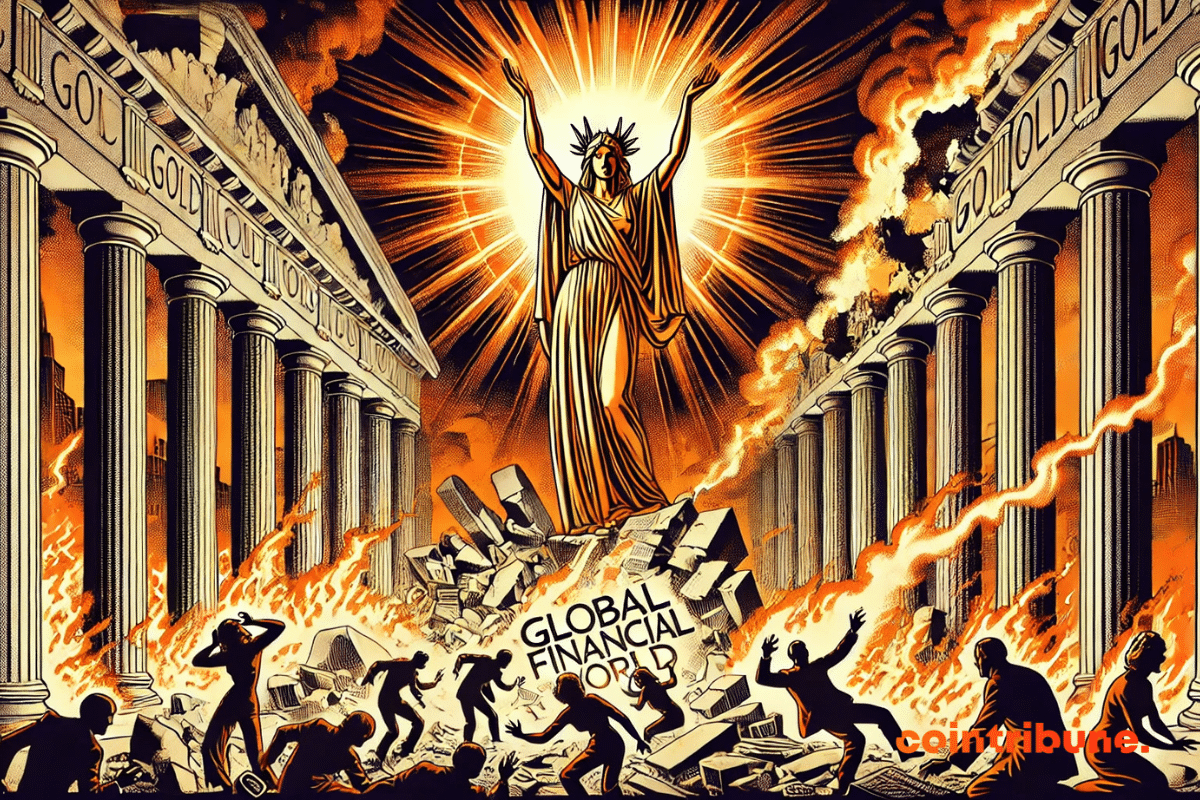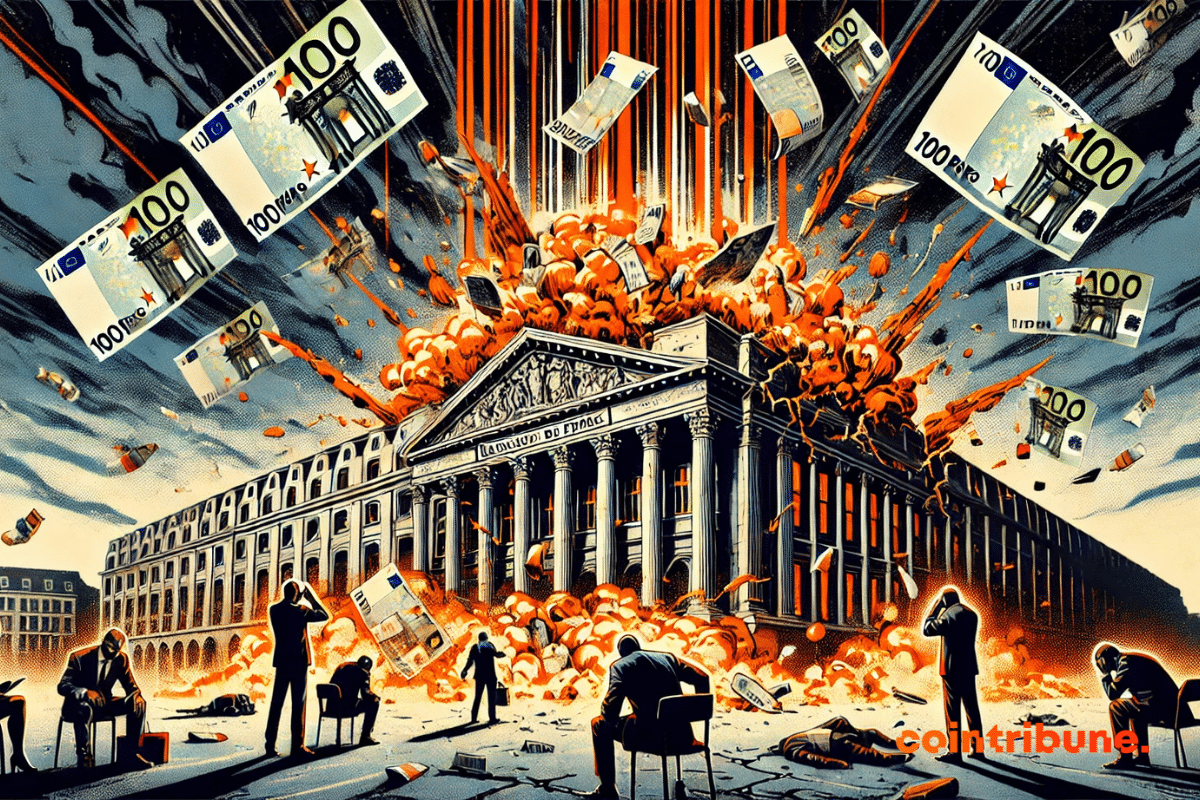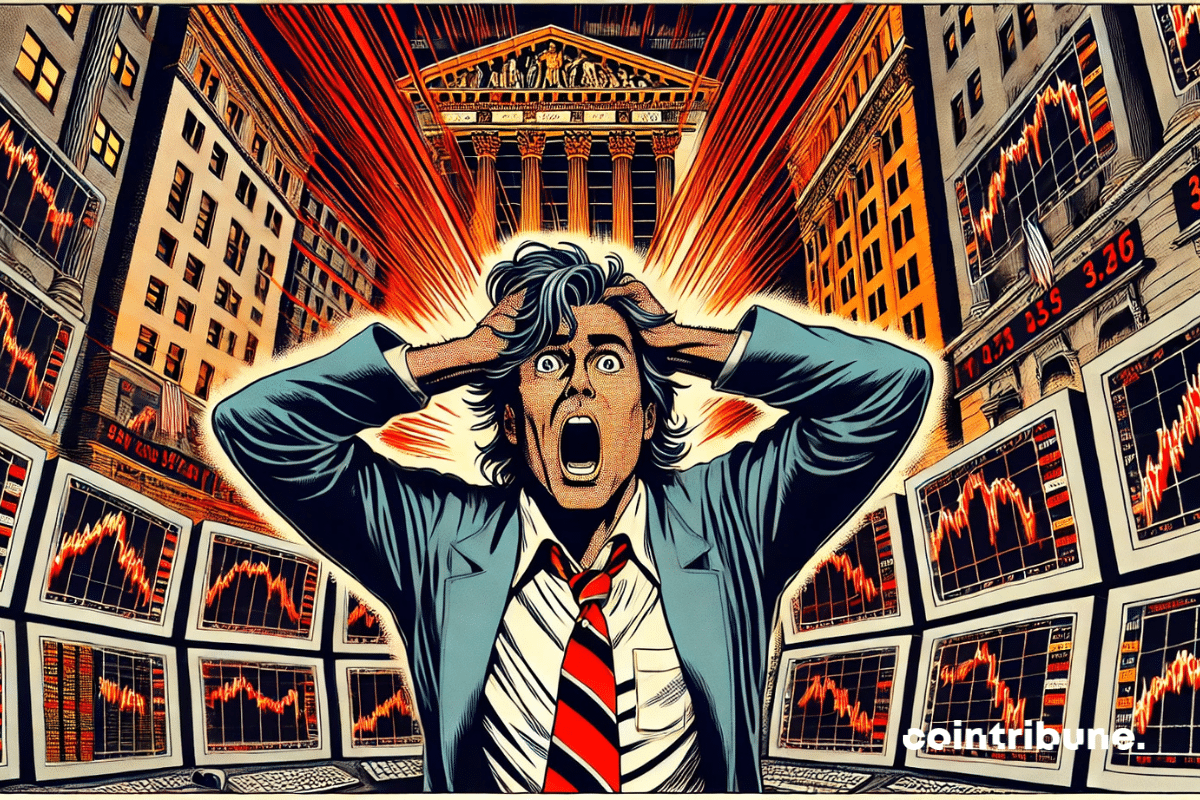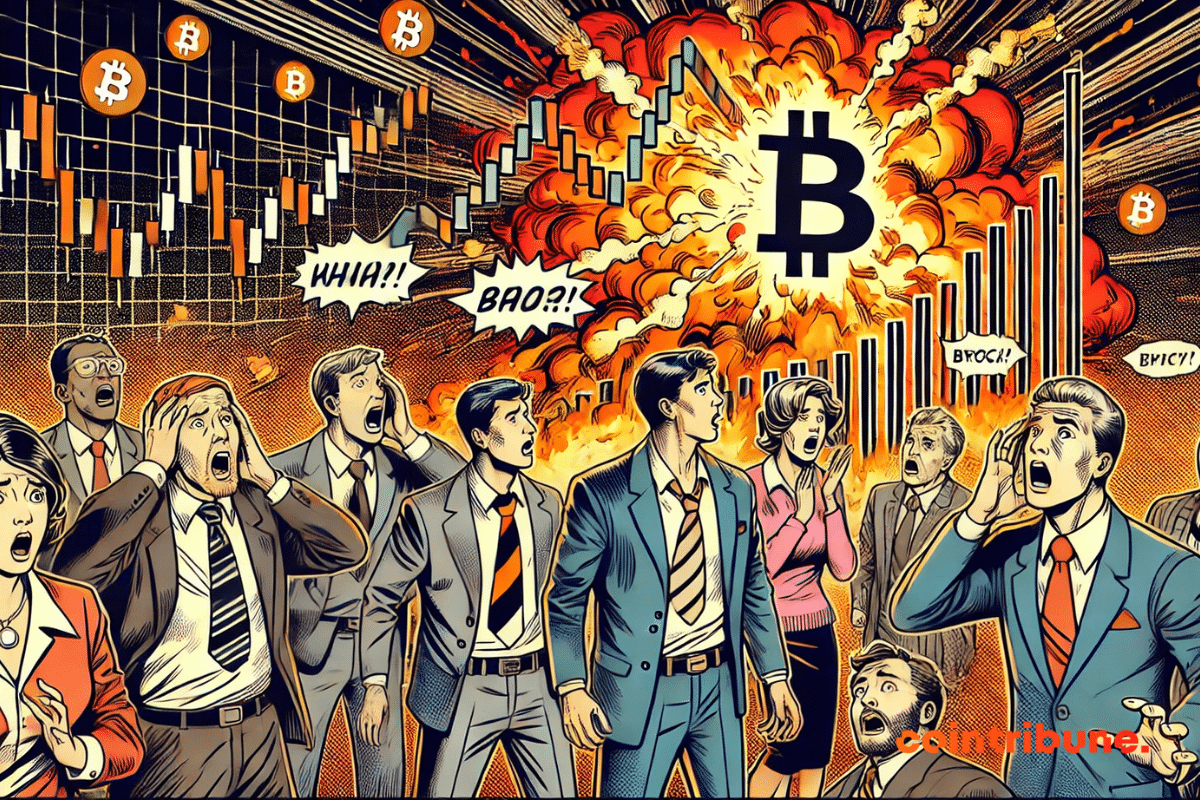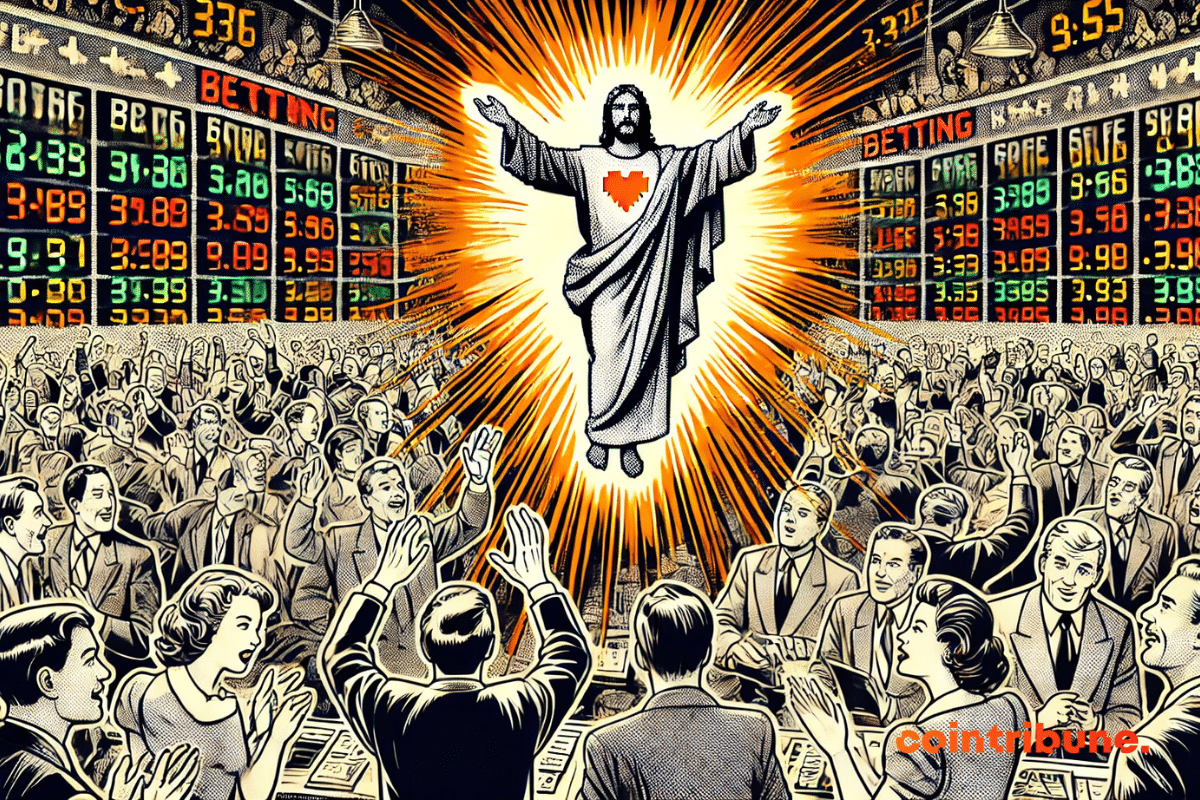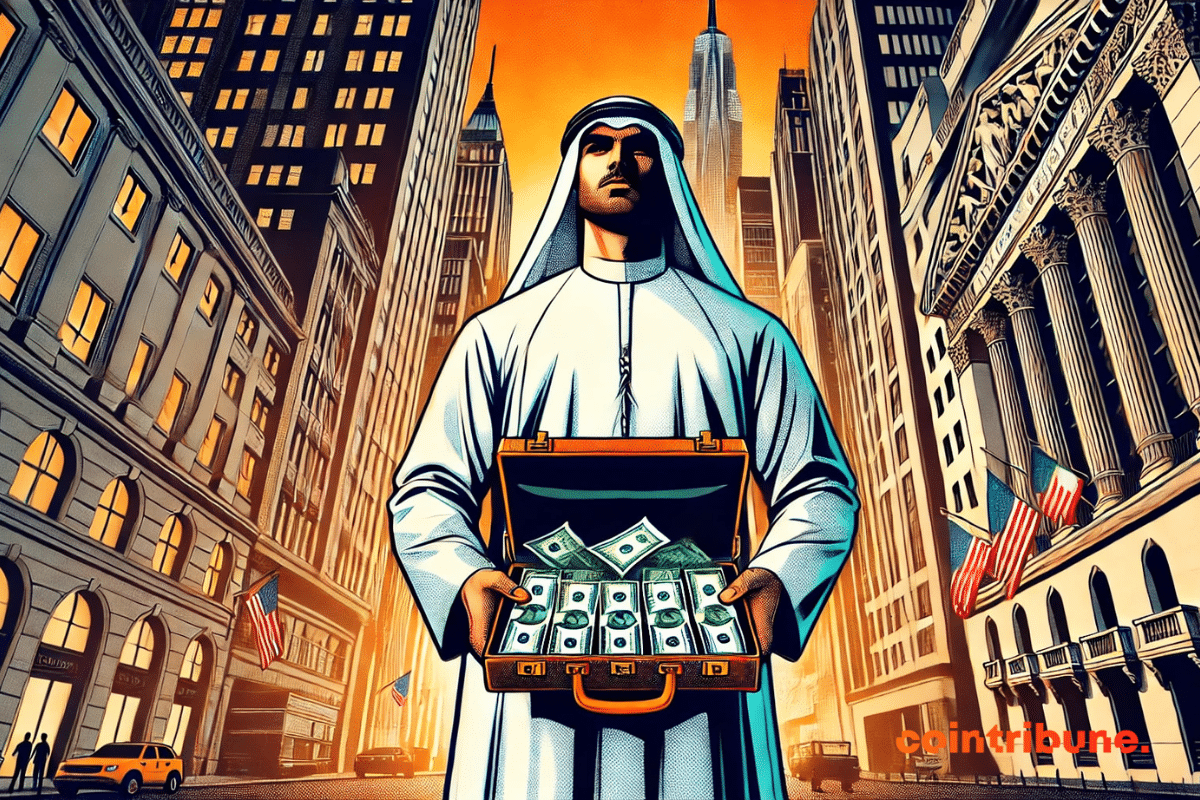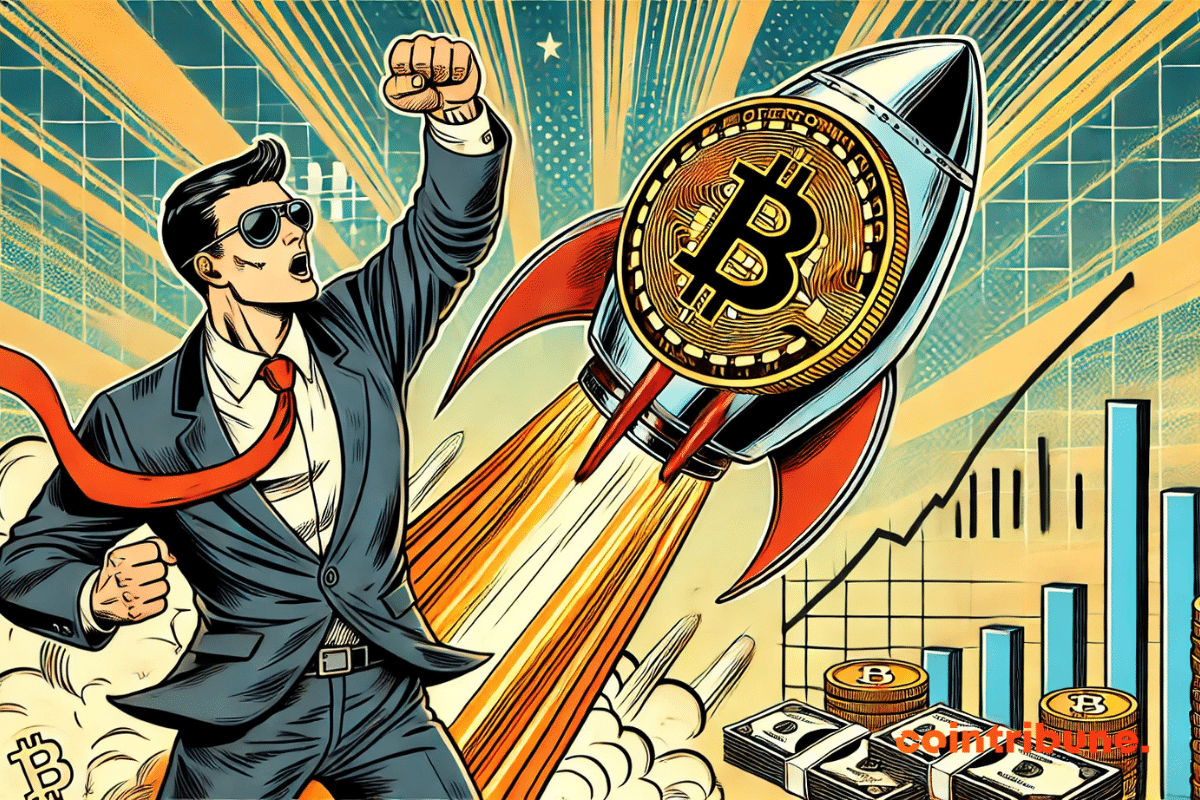Central bank digital currencies would eliminate all privacy, but few seem to care. Fortunately, there will always be Bitcoin.
Finance News
Gold is no longer just a safe haven. It has become an instrument of economic power. In 2024, the BRICS have massively accumulated the precious metal, anticipating a tightening of American trade policies. This bet is proving to be worthwhile, as the new tariffs announced by Donald Trump triggered a historic surge in gold prices. As the trade war intensifies, the yellow metal is asserting itself as the monetary weapon of emerging powers against the dominance of the dollar.
While the stock market stumbles, gold dances on the ashes of commercial promises. Trump stirs the embers, the Fed holds its breath in this theater of golden uncertainty.
Blockchain, often perceived as a shadowy area conducive to illicit activities, has just shown its other face: unrelenting traceability. In March 2024, the U.S. Department of Justice announced the seizure of $201,400 in crypto linked to Hamas. Behind this spotlight is hiding much broader stakes than merely the confiscation of assets. Between increased regulation and myths to be deconstructed, this case raises crucial questions about the future of terrorist financing in the digital age.
The American economy is entering a turbulent zone. Trump is taxing cars, the markets are derailing. All the details in this article!
Nubank adds 4 new assets to its portfolio. A strategic expansion that could be a game changer in the Brazilian crypto market!
Crypto payments are booming, but a danger persists. Bitget Wallet reveals all in its report! Details in this article.
eToro is making its mark in the big leagues. The social trading platform, a symbol of the democratization of investment, has officially launched its initial public offering (IPO) process in the United States. In a market where tech IPOs are regaining momentum, this strategic move underscores eToro's ambition to consolidate its global presence and compete with American giants in online brokerage.
BlackRock launches its iShares Bitcoin ETP, a bold bet on a hesitant European market. Will BTC finally establish itself against traditional assets?
The world of crypto continues to blur the lines with traditional finance. This time, it's BlackRock making a media splash by integrating Solana into its tokenized monetary fund, BUIDL. This decision is not just a simple technical adjustment, but a strong signal: blockchain is no longer a marginal experiment. It is becoming the backbone of a financial revolution in progress.
Finally, the wall of distrust is crumbling. BoursoBank, the French giant of online banking, reaches a historic milestone by incorporating crypto ETPs into its offering. A notable turnaround for this subsidiary of Société Générale, which has long been distant towards digital assets. By partnering with CoinShares, the European leader in the sector, the platform breaks into the traditional world of finance. Bitcoin, Ethereum, XRP... These names now resonate in the portfolios of ordinary investors. One more step towards the normalization of cryptos? Much more: a silent revolution.
Russia is at a major economic turning point, burdened by surging military expenditures and an escalating energy crisis. As financial resources dwindle, the cost of the conflict in Ukraine becomes unsustainable. By 2025, rising military spending and falling energy revenues will confront the country with an unprecedented economic challenge.
The stimulus from monetary easing and the public deficit bodes very well for Bitcoin, which remains poised just below $100,000.
The announcement was like a pin pulled grenade: Trump Media (DJT), the company behind Truth Social, is partnering with Crypto.com to launch a range of ETFs and exchange-traded products (ETPs) starting in 2025. In the wake of this news, DJT stock jumped by 9% in after-hours trading. Far from being just a media stunt, this partnership marks a key milestone in Donald Trump’s strategy to infiltrate the crypto ecosystem. Between blockchain technology and electoral ambitions, we analyze an audacious move.
While the markets slept, Strategy filled its digital vault with 506,137 shards of digital gold, each bitcoin stolen from silence for 33 billion reasons.
The Bank of France finds itself in 2024 facing an unprecedented financial situation with an operating loss of 17.7 billion euros. This loss, far from being anecdotal, highlights deep vulnerabilities within the European financial system, exacerbated by inflation, rising interest rates, and the management of public debts.
Amid revolutionary announcements, technological advancements, and regulatory turbulence, the crypto ecosystem continues to prove that it is both a territory of limitless innovations and a battleground of regulatory and economic disputes. Here is a summary of the most significant news from the past week surrounding Bitcoin, Ethereum, Binance, Solana, and Ripple.
Under the neon lights of Wall Street, History seems to stutter. The stock market stumbles, drunk on speculation, while the old crashes smile in the wings, ready to take the stage again.
In the midst of a volatility session, crude oil has seen a spectacular turnaround, driven by major geopolitical signals. This resurgence, far more than a technical rebound, fits into a broader strategic dynamic. As markets scrutinize the link between raw materials and cryptocurrencies, this development reconfigures the balances within energy markets.
Until April, crypto markets will feel the aftershocks of a deep-rooted economic storm. An explosive mix of geopolitical tensions and interest rate rigidity is stifling risk appetite. But behind this chaos lie opportunities. Decoding.
On March 20, 2025, Elon Musk spoke live from Austin in an attempt to contain the storm shaking Tesla. As the stock collapses on the market and criticism intensifies, the CEO played the card of appeasement and loyalty, and relied on an offensive speech to maintain internal cohesion and reassure about the group’s future.
The crypto universe has never feared the absurd. But when blockchain gets entangled with biblical prophecies, even the most seasoned raise an eyebrow. On Polymarket, a decentralized predictive betting platform, a bold contract challenges the laws of the sacred: a 3% chance that Jesus Christ will return before the end of 2025. An unusual bet, certainly, but indicative of an era where decentralized finance embraces the most improbable mythologies.
As the American stock market experiences a period of turbulence, Warren Buffett, known as the Oracle of Omaha, has made a strategic withdrawal from certain American assets to strengthen his positions in Japan.
As the digital gold of Bitcoin attracts the crowds, the shadow of Ethereum thickens, abandoned, drained, powerless to entice the trembling hands of the crypto market.
When Japan, China, and South Korea sit down at the same table, it's not to discuss the weather. In a world where trade tensions reshape alliances, their recent meeting could very well change the game in Asia... and beyond. Between promises, caution, and joint projects, a new geopolitical chapter seems to be unfolding in three voices.
The United Arab Emirates, now members of the BRICS, will invest 1.4 trillion dollars in the United States over ten years. Announced after a meeting with Donald Trump, this maneuver reshapes global balances. Between technological ambition, diplomatic calculation, and projection of influence, Abu Dhabi is shaking up the lines of a world now structured by variable geometry economic alliances.
The European Union is undergoing a discreet yet persistent revolution. A recent report from Oobit, a platform specialized in crypto payments, reveals that 70% of crypto transactions on its network are absorbed by retail, food, and beverages. This figure shatters the clichés about the marginal use of cryptocurrencies. But how can we explain this silent infiltration into the daily lives of Europeans? Between regulatory adoption and economic pragmatism, the landscape is reshaping.
The alignment of the planets continues. While the United States wants to accumulate "as many bitcoins as possible," the global money supply is climbing again.
Crypto: a state fund for seized assets? Discover the bold proposal from the authorities in Russia and the hidden stakes of the project.
In response to the strategic urgency, France is changing course: to support its defense industry, the state is inviting citizens to invest at least 500 euros in a fund managed by Bpifrance. This unprecedented call for popular savings comes amid growing geopolitical tensions and accelerated rearmament, raising as many questions as it intrigues regarding the risks and ambitions of such a financial commitment.

